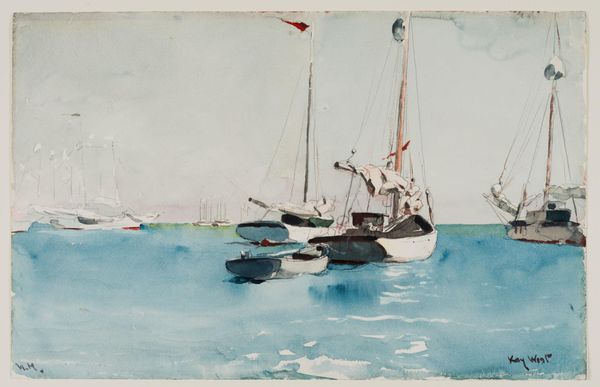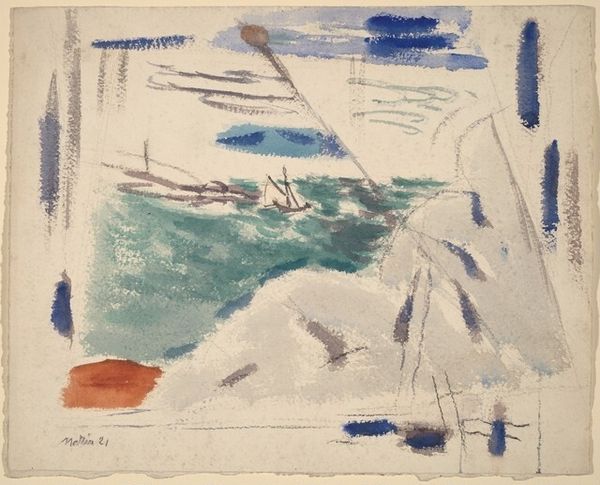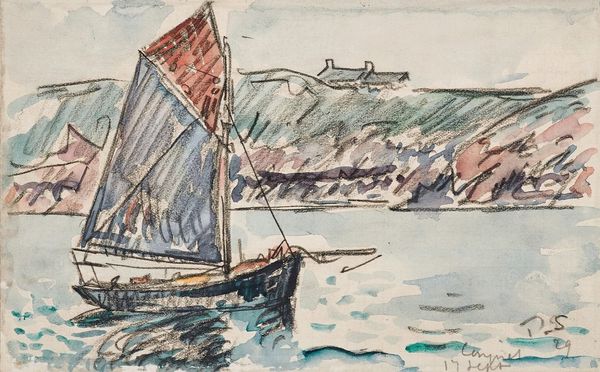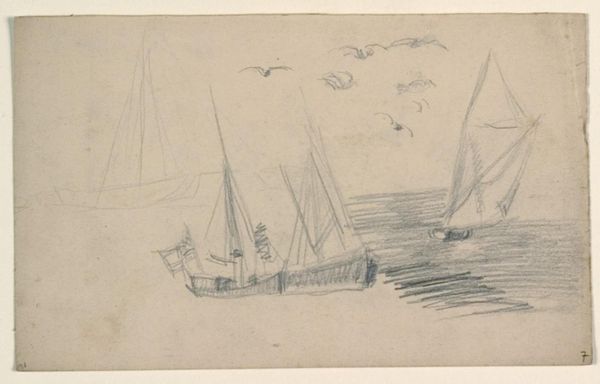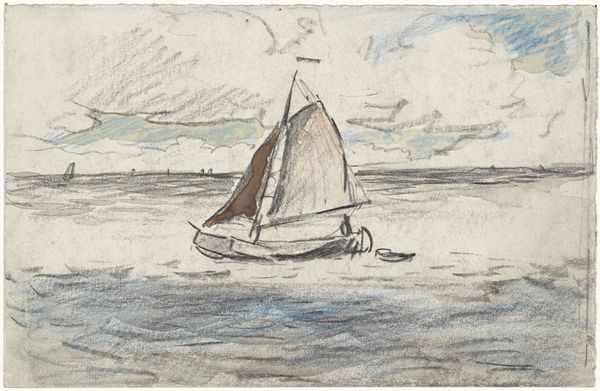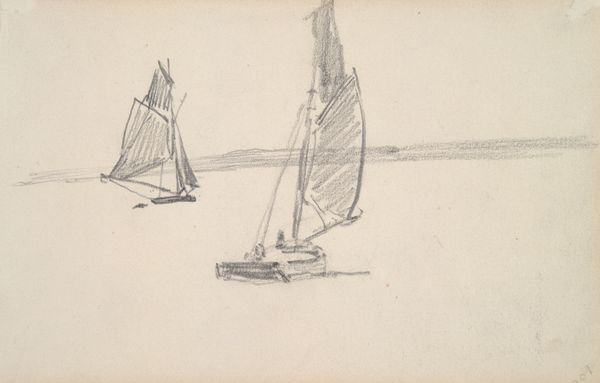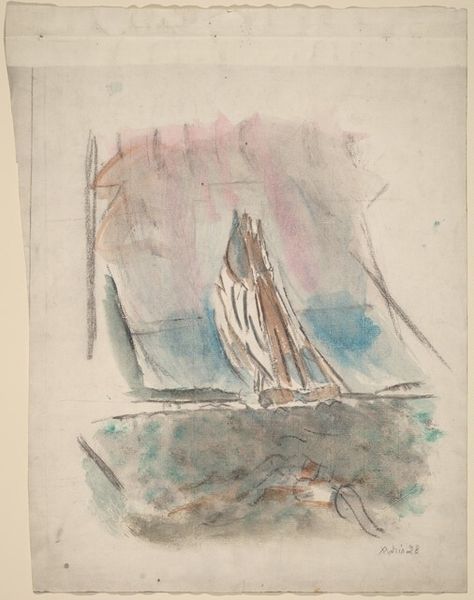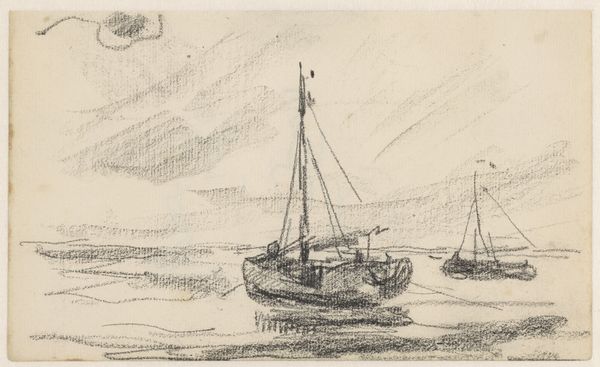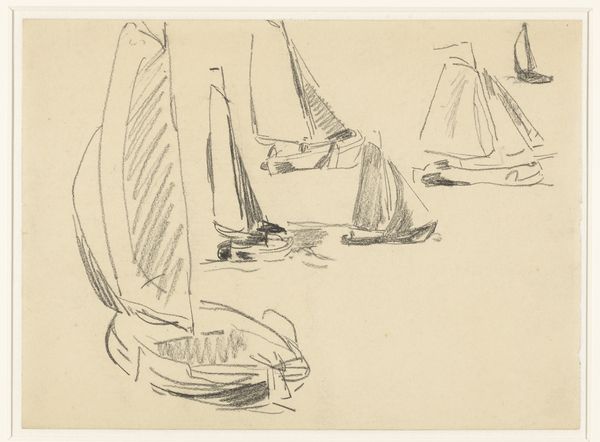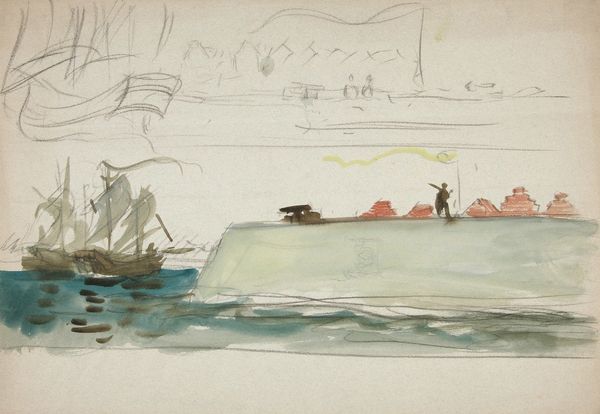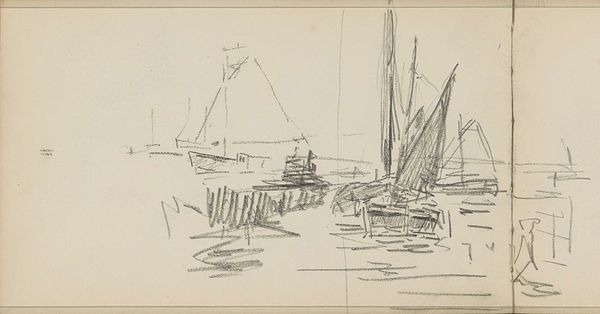
drawing, watercolor
#
drawing
#
landscape
#
oil painting
#
watercolor
#
abstraction
#
modernism
#
watercolor
Dimensions: overall: 44 x 56 cm (17 5/16 x 22 1/16 in.)
Copyright: National Gallery of Art: CC0 1.0
Curator: This is John Marin's "Movement No. 9, Sea and Boat, Deer Isle, Maine," created in 1927 using watercolor. Editor: It feels so ephemeral, like a half-remembered dream of the sea. The boat seems almost ghost-like. I can practically feel the chill of the Maine coast air! Curator: Marin was very interested in capturing not just the visual appearance of a scene, but the energy, the "movement" he felt within it. Notice how the visible pencil lines almost act as vectors, showing the forces at play. He aims for the essence, more than meticulous representation. Editor: Exactly! Look at the paint handling; very thin washes, allowing the paper itself to become part of the image. And the quick, gestural marks! It reflects a particular artistic labor – very deliberate yet immediate. I wonder what his studio looked like at that time? How did social class or gender impact his material conditions for making this piece? Curator: Well, Maine had become an artist colony of sorts in the early 20th century, attracting figures from the city who wanted a respite but could still easily return. Patronage was shifting; instead of wealthy individuals, a burgeoning museum and gallery system played a bigger role. Marin benefitted directly. The prestige afforded to these works shaped cultural tastes around seascapes in the United States, contributing to the public construction of coastal life. Editor: Yes! And I’m sure those watercolors were sourced from specific manufacturers with their own narratives about production and distribution. This was also at a time when American art sought its own voice distinct from European traditions. Curator: Precisely. His treatment of the watercolor medium, his choice of a rugged, yet picturesque subject, and his almost aggressive Modernism contributed to this sense of distinct national identity. There was real purpose. Editor: Purpose is key to remember as a piece gets historicized and viewed in galleries like this! We must stay reflexive and attuned to those contexts to grasp the conditions for its production and reception. It certainly has me thinking differently now. Curator: Me too. I hadn't considered the commercial networks that provided him with the materials in this remote landscape! It emphasizes the interconnectedness that seems invisible when experiencing an art object like this in isolation.
Comments
No comments
Be the first to comment and join the conversation on the ultimate creative platform.
